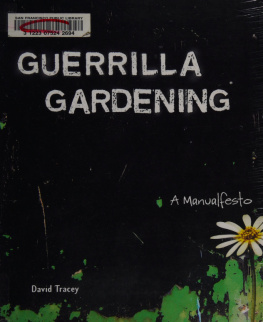Tracey Deutsch - Building a Housewifes Paradise
Here you can read online Tracey Deutsch - Building a Housewifes Paradise full text of the book (entire story) in english for free. Download pdf and epub, get meaning, cover and reviews about this ebook. year: 2010, publisher: Univ of North Carolina Press, genre: Politics. Description of the work, (preface) as well as reviews are available. Best literature library LitArk.com created for fans of good reading and offers a wide selection of genres:
Romance novel
Science fiction
Adventure
Detective
Science
History
Home and family
Prose
Art
Politics
Computer
Non-fiction
Religion
Business
Children
Humor
Choose a favorite category and find really read worthwhile books. Enjoy immersion in the world of imagination, feel the emotions of the characters or learn something new for yourself, make an fascinating discovery.

- Book:Building a Housewifes Paradise
- Author:
- Publisher:Univ of North Carolina Press
- Genre:
- Year:2010
- Rating:3 / 5
- Favourites:Add to favourites
- Your mark:
- 60
- 1
- 2
- 3
- 4
- 5
Building a Housewifes Paradise: summary, description and annotation
We offer to read an annotation, description, summary or preface (depends on what the author of the book "Building a Housewifes Paradise" wrote himself). If you haven't found the necessary information about the book — write in the comments, we will try to find it.
Building a Housewifes Paradise — read online for free the complete book (whole text) full work
Below is the text of the book, divided by pages. System saving the place of the last page read, allows you to conveniently read the book "Building a Housewifes Paradise" online for free, without having to search again every time where you left off. Put a bookmark, and you can go to the page where you finished reading at any time.
Font size:
Interval:
Bookmark:
Deutsch, Tracey.
Building a housewifes paradise : gender, politics, and American grocery stores in the twentieth century / Tracey Deutsch.
p. cm.
Includes bibliographical references and index.
ISBN 978-0-8078-3327-8 (cloth : alk. paper)
1. SupermarketsUnited StatesHistory20th century. 2. Grocery tradeSocial aspects United StatesHistory20th century. 3. Grocery shoppingSocial aspectsUnited States History20th century. 4. Women consumersUnited StatesHistory20th century. I. Title. hf5469.23.u62d48 2010
381'.456413009730904dc22
2009039274


- 1.1. Catharine Beechers kitchen
- 1.2. South Water Market
- 1.3. Woman buying food, 1926
- 2.1. The Harvest Moon
- 2.2. A&P store, c. 1920
- 2.3. Self-service
- 3.1. The blue eagle
- 4.1. League of Women Shoppers Christmas card
- 4.2. Henry Wallace and members of the Ida B. Wells Consumers Co-operative
- 5.1. A&P store, 1939
- 5.2. Altgeld Gardens Consumers Cooperative, 1945
- 6.1. Woman buying groceries during World War II
- 6.2. The Home Front Pledge
- 7.1. Exterior of new Hyde Park Consumers Co-op
- 7.2. Interior of new Hyde Park Consumers Co-op
- 7.3. Interior of new National Tea superstore
- 7.4. Life magazine, 1955
- 7.5. Interior of Chicago supermarket, 1968
- c.1. The Stepford Wives
- 5.1. National Tea Company Combination Stores, 19271936
- 5.2. Chain Grocery Firms Concentration in Chicago Neighborhoods, by Income of Neighborhood, 19281930 and 1940
Font size:
Interval:
Bookmark:
Similar books «Building a Housewifes Paradise»
Look at similar books to Building a Housewifes Paradise. We have selected literature similar in name and meaning in the hope of providing readers with more options to find new, interesting, not yet read works.
Discussion, reviews of the book Building a Housewifes Paradise and just readers' own opinions. Leave your comments, write what you think about the work, its meaning or the main characters. Specify what exactly you liked and what you didn't like, and why you think so.












